This post reflects on a workshop, in which we will observe four systemic thinking perspectives. After reading you will have an insight into constellation work and how it can be utilized to incorporate the four key systemic thinking perspectives into your own agile team coaching workshop design.
These four main perspectives were shared in the earlier blog post entitled: "What does it mean to think systemically in an agile coaching context?" This earlier post should be read prior to reading this one.
In order to answer the question this post poses, let's design, prepare and carry out a workshop together...
Setting the Stage
This practical example demonstrates the application of constellation work with a team. In constellation work the whole team is invited to use spatial proximity and distance to describe positive associations as well as dysfunctions within their team's social system. The team is then encouraged to propose their own solutions with respect to achieving a particular team goal. The different systemic perspectives (as outlined in the previous blog post) will be observed and reflected upon throughout this post.
In order to make these reflection moments obvious for you, they are indented in the text for clarity, in the same way that this paragraph is also indented.
- Cybernetic in the first order can be observed through the interaction between team and coach in the workshop situation.
- Cybernetic in the second order is enabled by using model figures to represent individual team members. This allows each team member to create a personal meta view of the team from which overall team dynamics can be observed.
- Constructivism is demonstrated by allowing each team member to share their own view of reality on the team situation with the rest of the team.
- Circularity will be brought into play, as each individual sees how each other person in the team observes the seemingly same intra-team relationships.
- Autopoesis then finally enables the team to self organize around a solution of their own making in the last stage of the workshop.
Let's now look step by step at the team workshop preparation, design and execution.
Step 1: Workshop Preparation
After an initial briefing on how to manage the workshop the Product Owner worked with the team to provide feedback to the question:
“What would be a good result in terms of improvement initiatives out of the workshop day?”
The feedback was varied, however it fell into two main categories:
- Teamwork and collaboration
- Leadership and accountability
After focusing further the team agreed it was most valuable to make in-roads on the topic of collaboration – our workshop theme then became “Improved collaboration across all team members.”
Step 2: Getting the Coaching Workshop off to the Right Start
Setting the right atmosphere at the beginning of the workshop was important - before moving into the main part of the session the team took time to appreciate each others' involvement in the team to date. This was done by creating a wall of appreciation using Kudo Cards. This wall remained visible throughout the rest of the workshop as a reminder of respect, thanks and positivity towards each other.
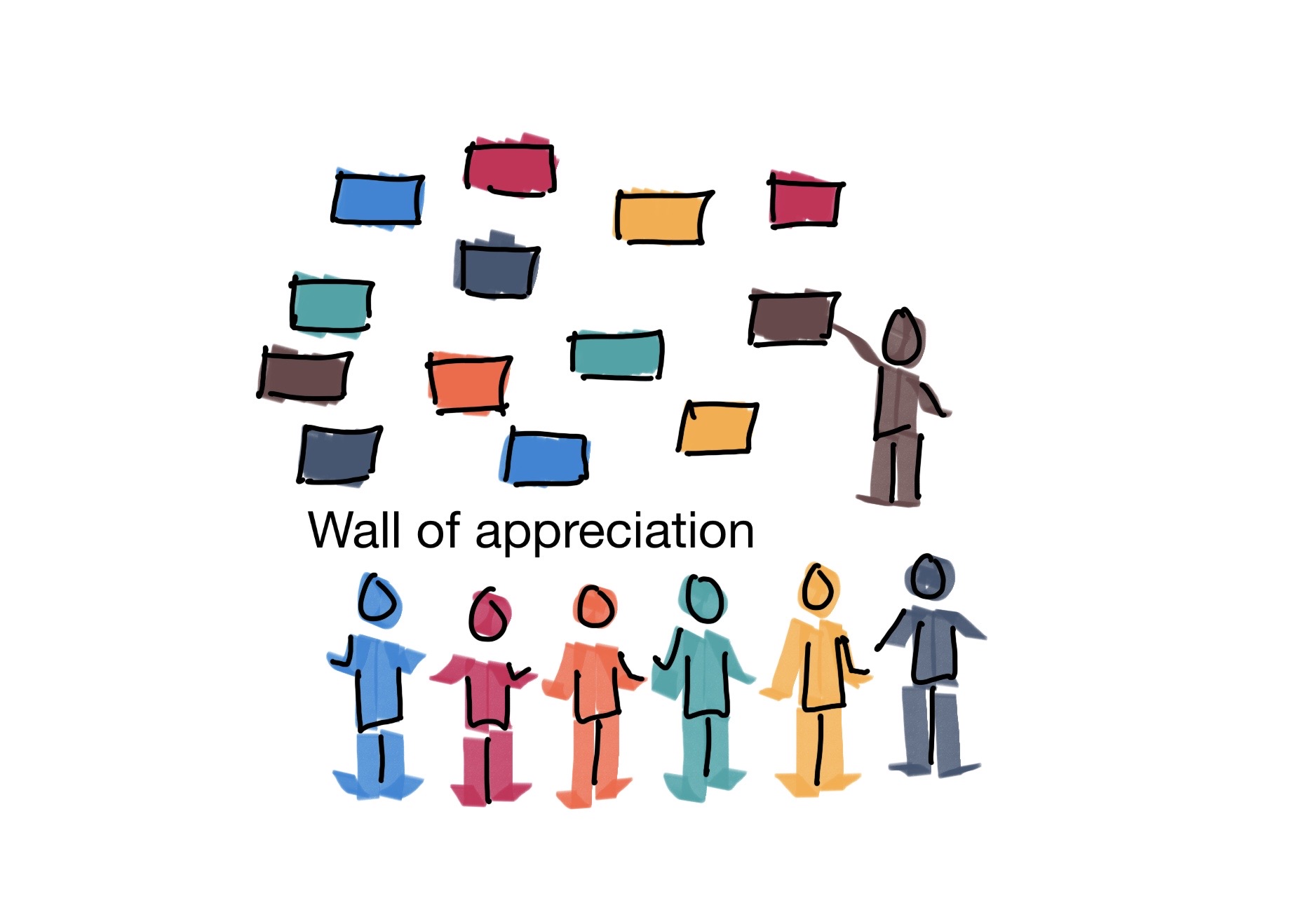
This is an example of cybernetics in the first order with the coach clearly having an influence on the dynamics of the team. In this case it reinforced an expectation that we would treat each other with respect throughout.
Step 3: Introducing Constellation Work to the Team
Constellation work can be daunting if you are involved in it for the first time. It requires you to put yourself out there.
It was therefore important to let the team into the process of working with constellations gently. To achieve this the first constellations were created using model figures. Each of these figures represented one of the team members attending the session. The session was designed to first allow each team member to gather their own thoughts and perspectives of the situation on their own personal constellation board. So, we started with all seven participants building a constellation for themselves to portray their own individual perspective. This was done on seven individual boards each using identical figures to one another. This perspective was based on each individual’s view on how each team member was positioned in relation to each other, when a focus on collaboration was given. Proximity and association between figures indicates higher interaction and stronger relationships. Distance and disassociation indicates lower collaboration and weaker relationships.
The focus on collaboration was achieved by not only having seven figures to represent each individual, but also having a symbol for collaboration. As we were using model figures we also chose a common figure to symbolize collaboration. The team was given guidance at the beginning on how to build their constellation. The spatial element was achieved using an A3 piece of paper to represent their team room. The position and orientation of each figure on the paper indicated how each person perceives each other team member’s interaction in relation to one another. The group was given 30 minutes to complete the exercise and have their board ready to review together in the whole group.
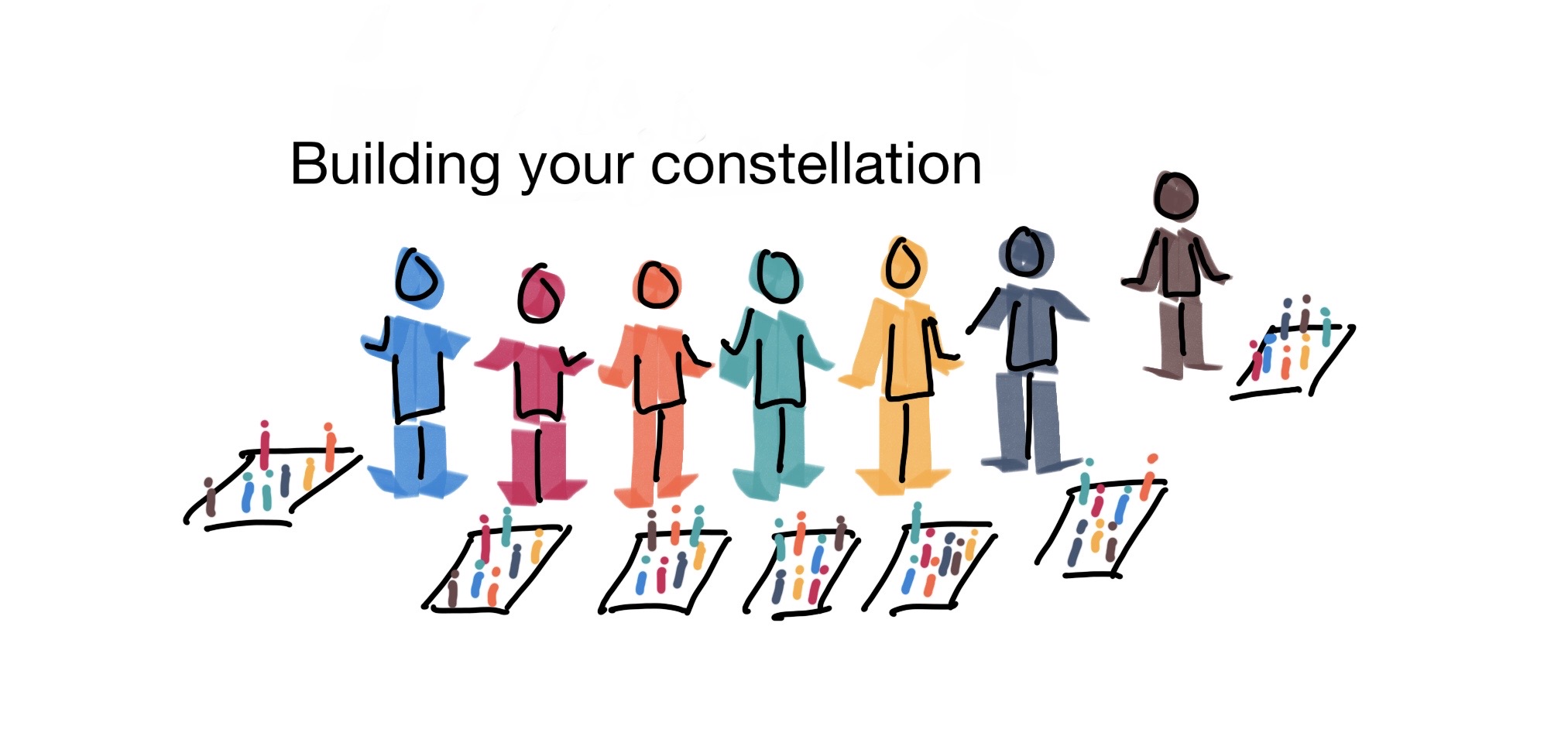
The meta position that was created through the constellation board helped us to take a systemic perspective of cybernetics in the second order. By viewing the whole team situation, including their own position within it, each team member could observe their own perceptions. By hovering above and around the board new insights on the team dynamics could be gained at a very individual and personal level. By making the proximity, distance and interactions between team members visible, and by sharing the the individual perceptions, a whole new quality of understanding of the relationships within the team evolved.
Step 4: So what do the Observers observe of Themselves?
It is important that a healthy trust and respect for one another exists within the team when carrying out constellation work. Once all constellation boards were ready for review each team member in turn was asked the same initial question:
“What do you personally want to say about your own situation, when you consider your own position in your own constellation?”
This was then followed by the question:
“What do you personally want to describe about the whole team when you consider the full constellation for the whole team?”
These two questions allowed each individual to verbalize how they see themselves, and their other team members from their own personal perspective. It provided a personal view, a view in relation to each other, as well as with a focus on collaboration. This individual perspective playback was very powerful as it enabled each team member to voice their own view individually one by one, in an orderly and coherent manner. It enabled all team members to be equally heard as part of the whole team, as each member received the same time allocation, and attention from other team colleagues.
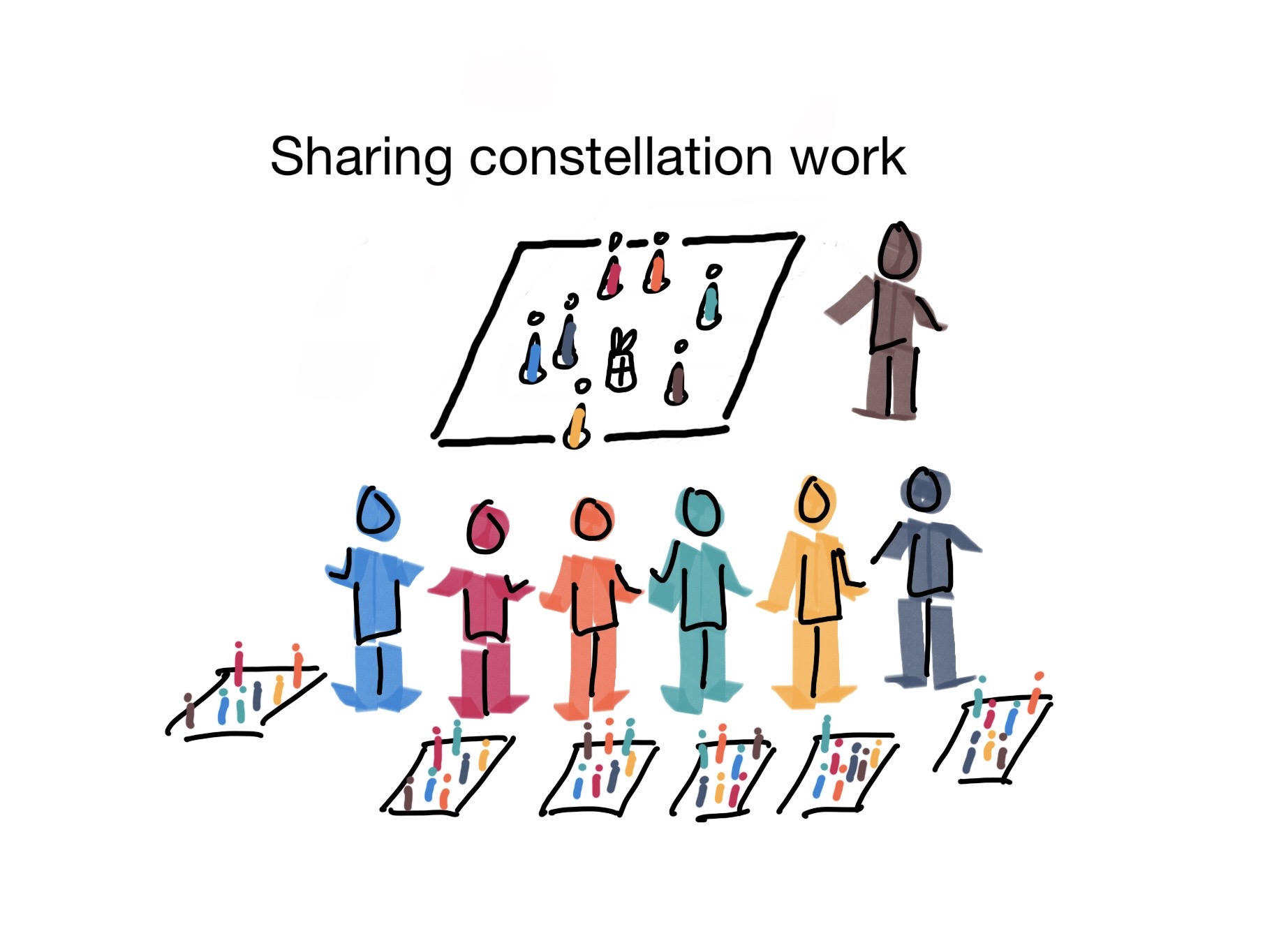
This step is again showing how the coach is influencing the team through questioning and thereby applying the perspective of first order cybernetics. It is also bringing the systemic perspective of constructivism into play. Everyone is provided the opportunity to share their own view of reality when answering the coaching questions.
Step 5: Better Understanding each other's View of Reality
After each individual description of their own constellation, an opportunity was given to the whole group to ask clarifying questions. This was the opportunity for each person to check they had fully understood what the presenter had shared with them. Throughout this whole process it was my role to ensure that the questioning did not turn into a longer discussion, or worse still a debate. It was important to ensure that the answers to the questions were left without further comment, and that everyone simply had the chance to internalize what was being shared.
This personal perception round was repeated for all seven participants. Upon completion of the seven rounds each constellation was photographed for reference and use after the workshop.
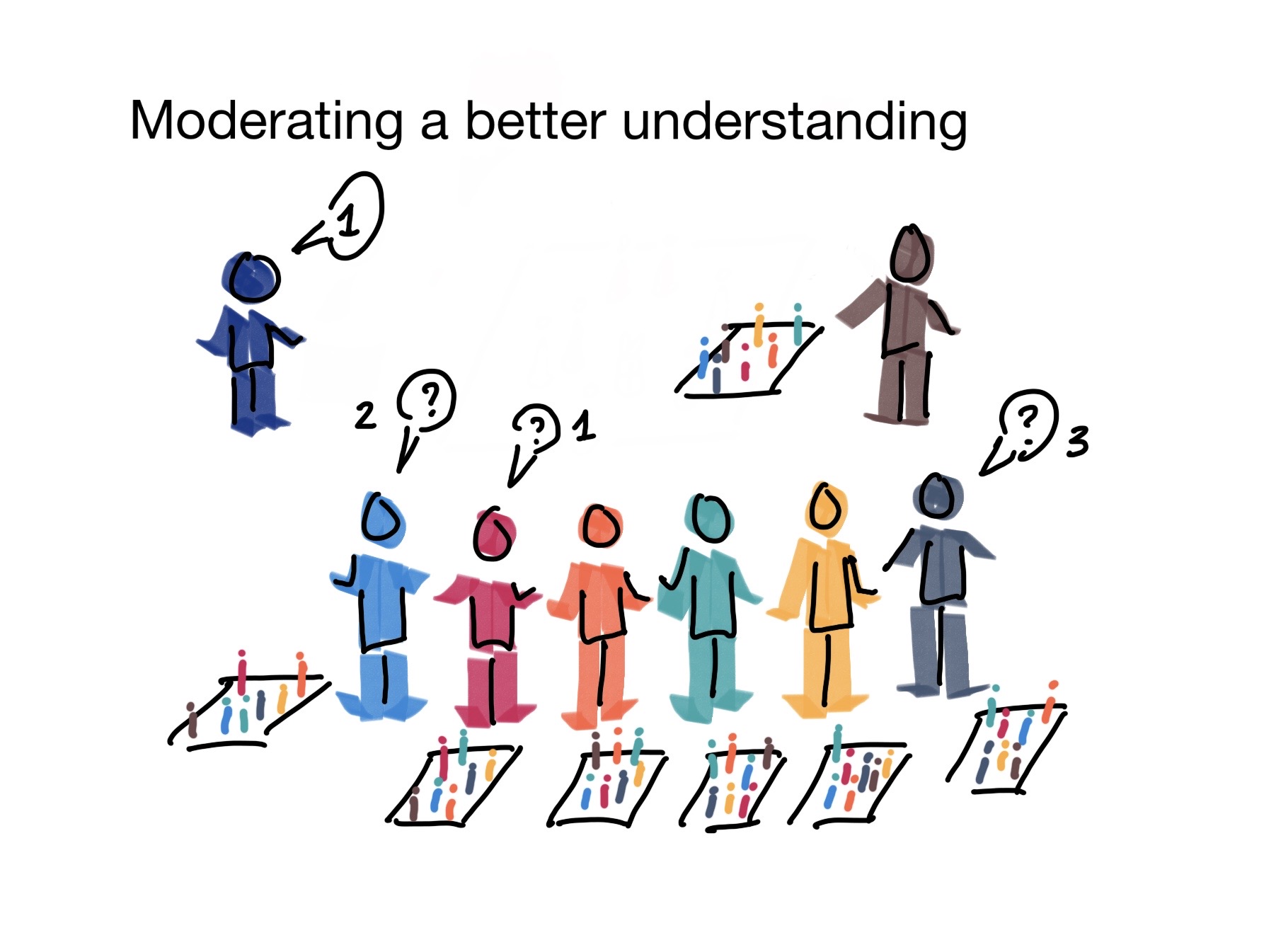
A further systemic perspective is being enabled in this step - that of circularity. Each listener is being exposed to the reality of another team member one by one. They are being invited to view the situation from another team member's perspective. When we come out of our own view of the world and position ourselves in that of another we enable, in systemic terms, a circular perspective.
Step 6: Team Constellation in Person
After a break the team members were then asked to actually become the actors themselves in one more constellation. A single constellation which should address the following question:
“What team constellation would best address the issues you have heard, and would provide a greater focus for the team on a holistic collaboration?”
The team was then given enough physical room to create a new constellation themselves in their own team room.
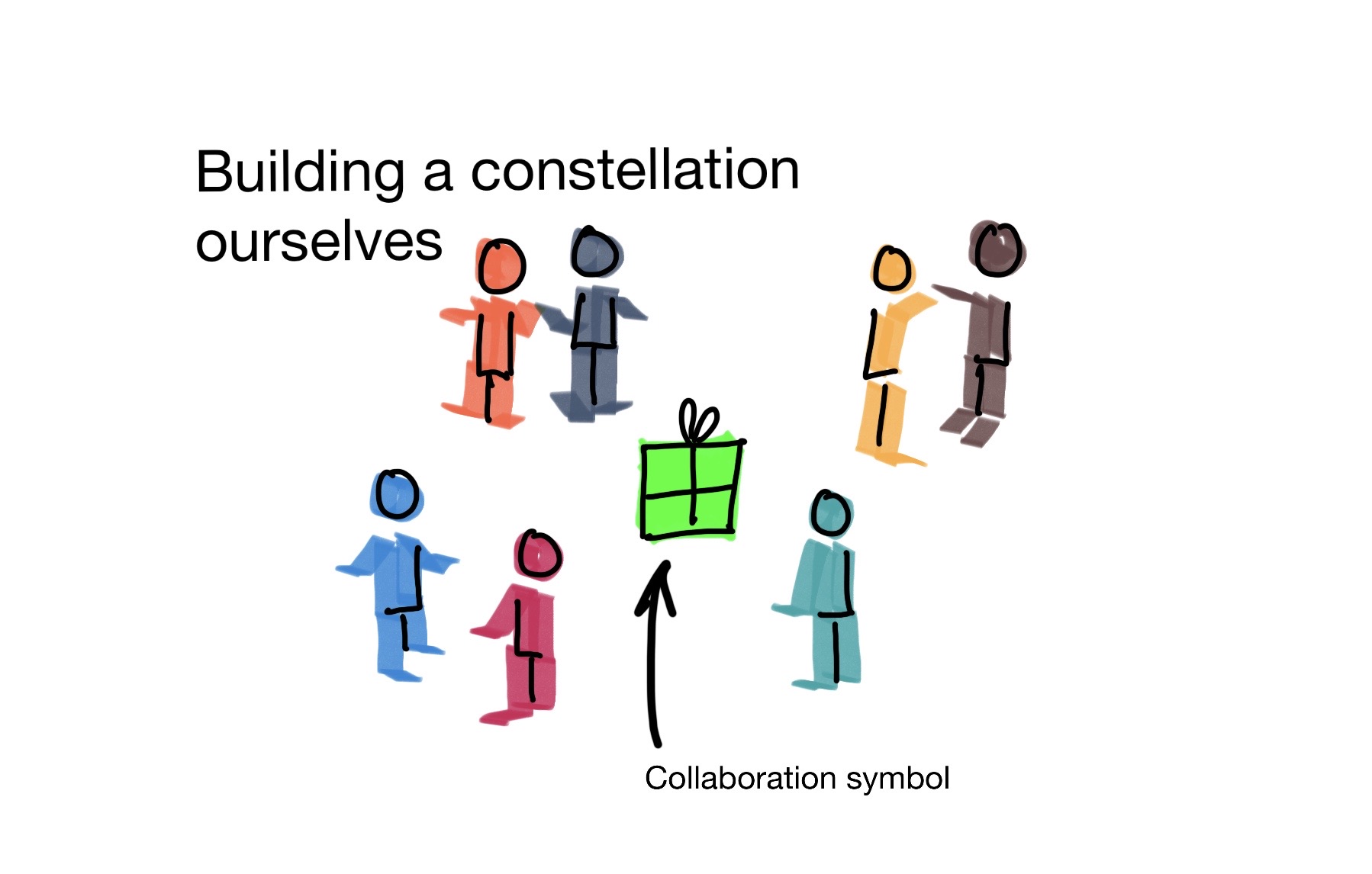
The team experienced a number of systemic perspectives in this fourth step. First order cybernetic influence through the coach's question and facilitation. Constructivism by observing how each person constructed a reality that could work for them. What is new here though, is the application of the systemic perspective of autopoesis. The team was given a goal (improve collaboration) and a fairly open boundary scenario (be respectful, use the room available to you) in which they could then self-organize towards a solution.
Step 7: Helping the Team to help Themselves
Once the initial constellation had been formed each person was asked individually:
“How comfortable do you feel about your position in this team constellation?” “What is good about it, and what does not feel right?”
Following this first round of questioning, a second question was asked:
“What impulse for movement do you now feel and want to make based on where you are now?”
These questions were to help the team identify the impediments to a greater level of collaboration. They were intended to generate a call to action that the team itself could take outside of the context of the workshop. They were intended to help the individual team members see that it is often necessary to adjust their own individual position in order to help others, and to benefit the team as a whole. The team members were then asked to actually physically adjust their position to see what impact their movement had on the team as a whole. If this was not easy, then they were supported by a further question:
“What help do you need from anyone else, inside or outside the team, to be able to make this adjustment and improve the overall collaboration?”
This question provided a further positive impulse for the team to consider who they would each individually need to involve, both inside and outside of the team, to improve the overall collaboration.
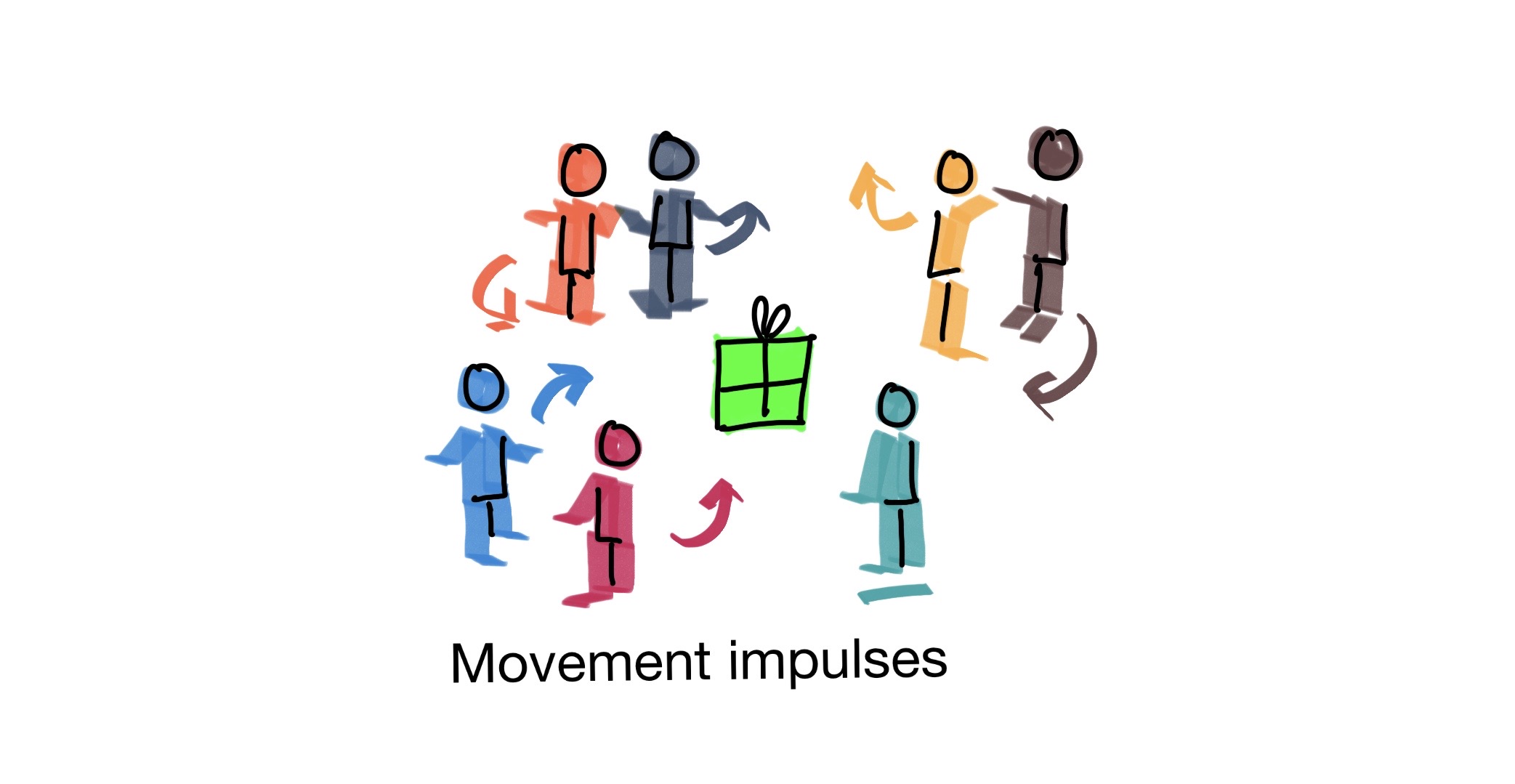
In this final series of questions the coach is providing a subtle influence on the team - first order cybernetics - to take further self-organizational responsibility towards achieving their goal - autopoesis. Autopoesis was further enabled by widening the boundaries - it is OK to ask other people outside of the team for help. As each team member physically moved in response to the questions, everyone could see what their influence was on each other. One individual's movement triggered a further movement elsewhere in the team's social system - this was keeping circular perspectives as well as individual constructivism constantly transparent.
Step 8: Wrapping up and moving Forward
It is important in such a session not to over analyze what has just happened. Each individual needs to take their own personal impulses out of such a session with them. What happens with these impulses in the team's daily work is the important thing. Here the coach can continue to observe the team, and provide reminders of the commitments for positive change should the team fall back into previous patterns. Making the progress towards the goal visible and measurable helps keep the team honest in their own commitments towards, in our case, the going-in objective of "Improved collaboration across all team members".
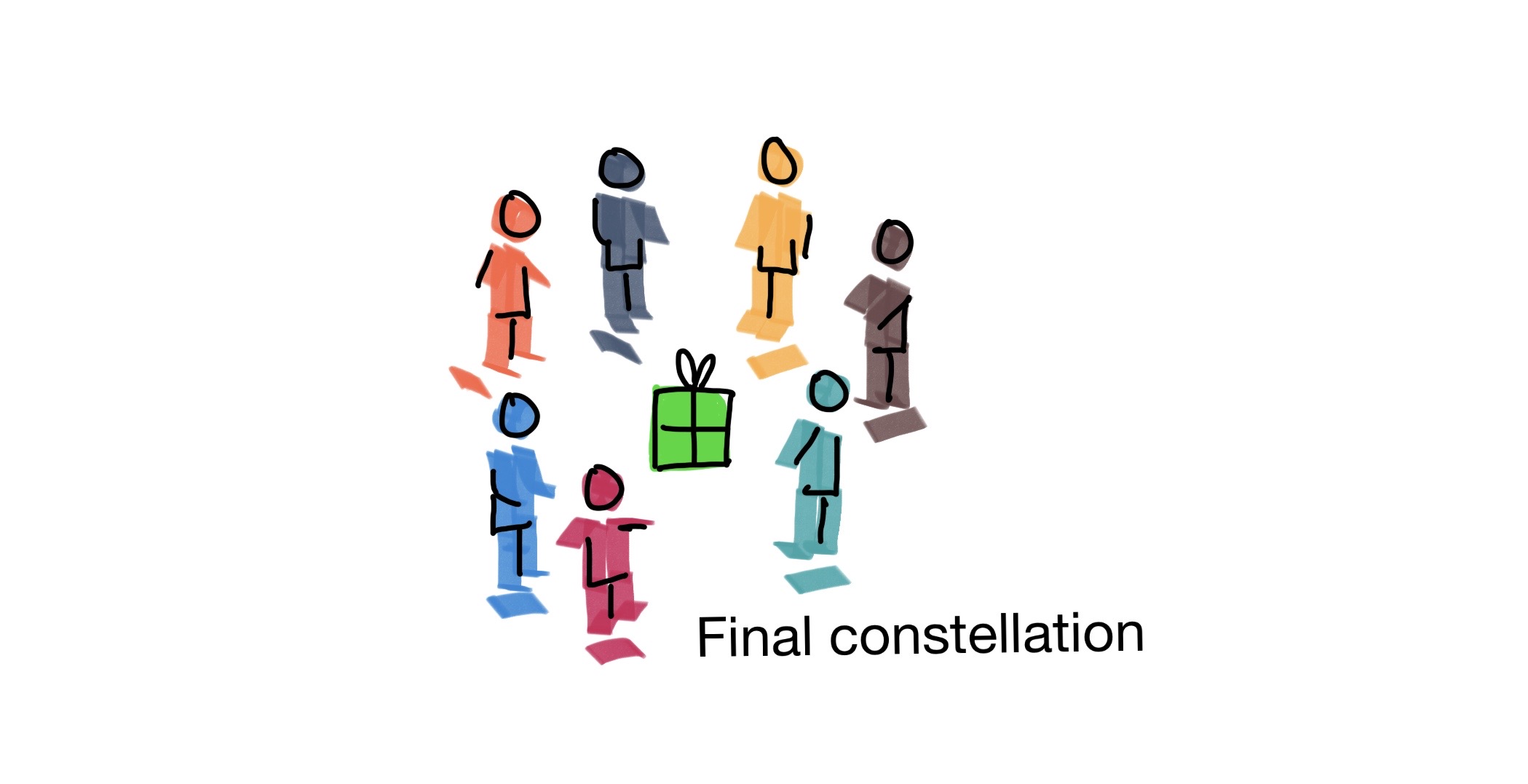
So beyond the workshop and into the team's daily routines a reminder of the need to keep cycling through all our systemic perspectives will help the team to move forward. Let's look at these perspectives one last time in a summary.
Summary and Further Thoughts
This example demonstrates how a team was introduced to the coaching process of constellations. As a result, the session helped the team to:
- open up to trusting a coaching process to provide impulses for positive change (first order cybernetics)
- take a step back and view the system as an outside observer (second order cybernetics)
- appreciate that everyone has their own view on reality (constructivism)
- view the team dynamics from each other's perspective (circularity)
- self-organize to identify individual and team actions for positive change (autopoesis)
Easing a team into the process by using model figures helps immensely in early team constellation work. Ultimately, moving to a constellation in which the individual team members represent themselves provides a greater effect. Also, it helps to include further elements - in our case a symbol for collaboration - around which the team was challenged to optimize its position. In other situations these additional symbols may represent specific conflicts, or other characteristics like power, hierarchy, or even fear or passion.
Putting team characteristics (dysfunctions and/or assets) out in the open helps greatly to get the right discussion going. Our focus on adjusting the team dynamics in relation to a common guiding goal, "improved collaboration", allowed everyone to focus on their own accountability and action in order to move together as a team towards this common interest.
Constellation work can easily be adapted to address goals other than collaboration. As teams mature, and by helping them to maintain a focus on positive team values such as respect and visible appreciation for each other, such a process can also address more challenging situations such as conflict resolution. In a business context when individual goals or targets create hidden conflicts and inhibit a fully open environment, the method can be very effective in making breakthroughs.
What is your experience on using constellations to access the four systemic perspectives?
Please let me know in the comments below - I am keen to hear your perspectives!
